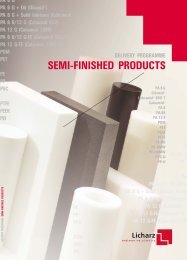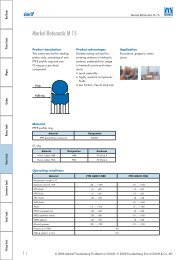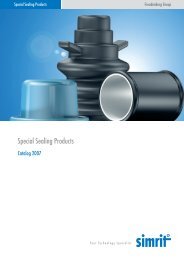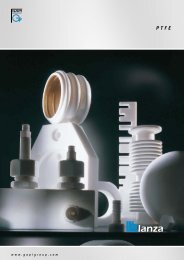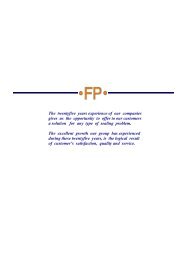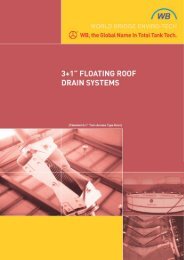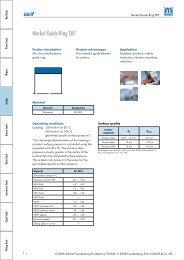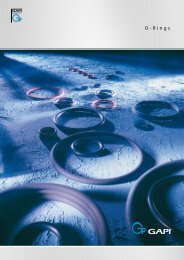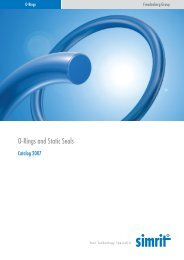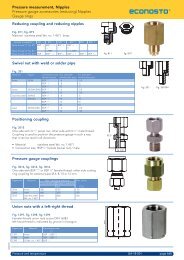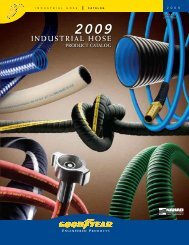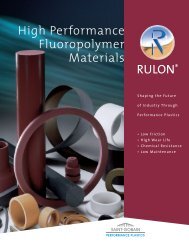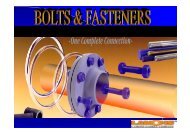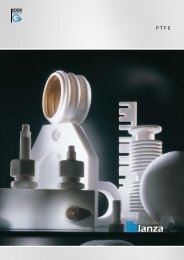Oleodinamica/Pneumatica Hydraulic/ Pneumatic
Oleodinamica/Pneumatica Hydraulic/ Pneumatic
Oleodinamica/Pneumatica Hydraulic/ Pneumatic
Create successful ePaper yourself
Turn your PDF publications into a flip-book with our unique Google optimized e-Paper software.
gioco radiale (mm)<br />
coupling radial (mm)<br />
0.05 0.10 0.15 0.20 0.25 0.30 0.40<br />
O-RING<br />
O-RInG<br />
Descrizione<br />
L’o-ring, di forma toroidale, può essere utilizzato sia<br />
per applicazioni statiche che dinamiche. Può essere<br />
fornito in varie mescole ed in varie durezze.<br />
La reperibilità di varie tipologie di materiali con<br />
differenti durezze, ha notevolmente ampliato<br />
il campo delle applicazioni. Anche se la forma<br />
toroidale è stata sostituita da altre tecnicamente<br />
più efficaci, la facilità di montaggio, la semplicità di<br />
esecuzione della sede ed il costo contenuto, hanno<br />
fatto dell’o-ring la tenuta più utilizzata.<br />
Dimensioni, tolleranze e qualità delle sedi<br />
La sezione nominale dell’o-ring, il diametro interno e<br />
la sede sono indicate nelle tabelle dimensionali.<br />
Le tolleranze di accoppiamento dipendono dalla<br />
pressione di esercizio, dalla temperatura del fluido e<br />
dalla durezza dell’elastomero.<br />
Il grafico di fig 7. indica orientativamente il gioco<br />
radiale in funzione della pressione e della durezza.<br />
La qualità della sede deve rientrare entro valori che<br />
non permettano all’o-ring di usurarsi nel leggero<br />
movimento che può avere durante cambi di pressioni<br />
o durante inversioni di ciclo.<br />
Nel disegno di fig. 8 sono elencate le rugosità<br />
consigliate delle sedi del pistone e dello stelo.<br />
Fig. 7<br />
70 sh°<br />
90 sh°<br />
RAE<br />
50 100 150 200 250 300 350 400 450 500<br />
pressione / pressure (bar)<br />
<strong>Oleodinamica</strong> & <strong><strong>Pneumatic</strong>a</strong><br />
Fig. 8<br />
O-RInG<br />
Description<br />
The o-ring has a toroidal shape and can be used for<br />
both static and dynamic applications.<br />
It comes in different materials and hardness.<br />
The availability on the market of various types of<br />
materials and hardness has widened the application<br />
range.<br />
The toroidal shape has been replaced by more<br />
engineered shapes, still the facility in the assembly,<br />
in the groove construction and the limited cost<br />
remain the o-ring’s strong points.<br />
Grooves dimensions, tolerance and quality<br />
The o-ring’s working section, diameter and groove<br />
are shown in the dimension tables. The coupling<br />
tolerances depend on the exerted pressure, on the<br />
fluid temperature and on the hardness of elastomers.<br />
In fig. 7 the graph shows the approximate radial play<br />
according to the pressure and the hardness.<br />
The groove’s quality values must remain within<br />
certain limits to prevent the o-ring from wearing<br />
out during possible small movements, in case of<br />
pressure change or of cycle invertion.<br />
In fig. 8 the drawing lists the suggested roughness<br />
rates in the piston and rod grooves.



